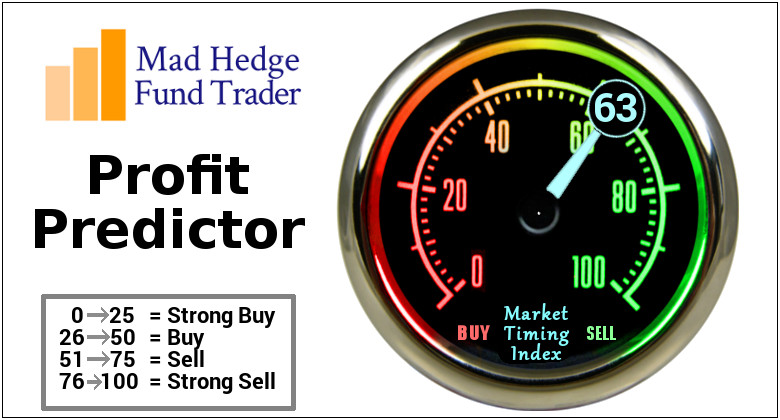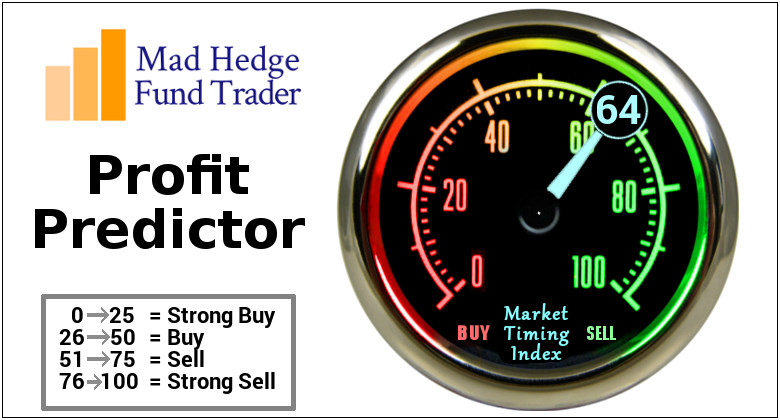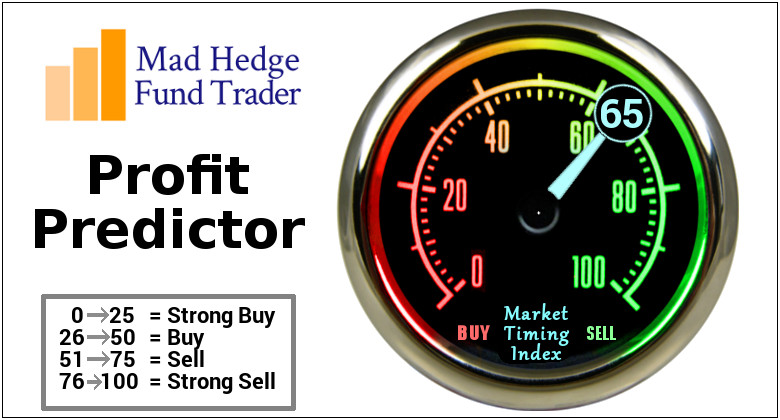Global Market Comments
June 15, 2018
Fiat Lux
Featured Trade:
(ONSHORING TAKES ANOTHER GREAT LEAP FORWARD),
(TSLA), (UMX), (EWW),
(KISS THAT UNION JOB GOODBYE),
(TESTIMONIAL)
Those of you counting on getting your old union assembly line job back in Detroit can forget it.
The eight-year forecast published by the Bureau of Labor Statistics shows that 4.19 million jobs will be gained in the U.S. in professional and business services, followed by 4 million health care and social assistance jobs, while 1.2 million will be lost in manufacturing.
This is great news for website designers, Internet entrepreneurs, registered nurses, and masseuses in California, but grim tidings for traditional metal bashers in the rust belt manufacturing states such as Michigan, Indiana, and Ohio.
I'm so old now that I am no longer asked for a driver's license to get into a nightclub. Instead, they ask for a carbon dating.
The real challenge for we aged career advisors is that probably half of these new service jobs haven't even been invented yet, and if they can be described, it is only in a cheesy science fiction paperback with a half-dressed blond on the front cover.
After all, who heard of a webmaster, a cell phone contract sales person, or a blogger 40 years ago?
Where are all these jobs going to? You guessed it, China, which by my calculation has imported 25 million jobs from the U.S. over the past decade.
You can also blame other lower waged, upstream manufacturing countries such as Vietnam, where the Middle Kingdom is increasingly subcontracting its own offshoring.
These forecasts may be optimistic because they assume that Americans can continue to claw their way up the value chain in the global economy, and not get stuck along the way, as the Japanese did in the 90s.
The U.S. desperately needs no less than 27 million new jobs to soak up natural population and immigration growth and get us back to a traditional 5% unemployment rate.
The only way that is going to happen is for America to invent something new and big, and fast.
Personal computers achieved this during the 80s, and the Internet did the trick in the 90s. The fact that we've done squat since 2000 but create a giant paper chase of subprime loans and derivatives explains why job growth since then has been zero, real wage growth has been negative, and American standards of living are falling.
While the current crop of politicians extol the virtues of education, the reality is that we are dumbing down our public education system. How do we invent the next "new" thing, while shrinking the University of California's budget by 25% two years in a row?
If my local high school can't afford new computers, how is it going to feed Silicon Valley with a computer literate workforce? The U.S. has a "Michael Jackson" economy. It's still living like a rock star but hasn't had a hit in 20 years.
China can have all the $20 a day jobs it wants. But if it accelerates its move up the value chain, as it clearly aspires to do, then America is in for even harder times.
I'll be hoping for the best but preparing for the worst. How do you say "unemployment check" in Mandarin?
Is This Your Future?
"We can lead, but we cannot carry," said Mike Ryan, chief investment strategist at UBS, about America's role in the global economy.
Global Market Comments
June 14, 2018
Fiat Lux
SPECIAL GOLD ISSUE
Featured Trade:
(GUESS WHO'S BEEN BUYING GOLD?),
(GLD), (GDX), (SLV), ($SSEC),
(WILL GOLD COINS SUFFER THE FATE OF THE $10,000 BILL?),
(GLD), (GDX),
(TESTIMONIAL)
Gold bugs, conspiracy theorists, and permabears had some unfamiliar company last year.
While traders, individuals, and ETFs have been unloading gold for the past five years, central banks have been steady buyers.
Who had the biggest appetite for the barbarous relic?
Russia, which has been accumulating the yellow metal to avoid economic sanctions imposed by the United States in the wake of its invasion of the Ukraine.
Hot on its heels was China, which has flipped to a large net importer of gold to meet insatiable demand from domestic investors. China appears to be buying about 20 metric tonnes a month of the barbarous relic.
It seems the Chinese stocks markets ($SSEC) were not the great trading opportunity that they were hyped to be, which plunged 30% during the first two months of 2016, and is now 60% off its all-time high.
That's a big deal in a country that has no social safety net.
Many Chinese now prefer to buy gold instead of stocks, which are now considered too risky for a personal nest egg.
They are facilitated by the ubiquitous precious metal coin stores, which have recently sprung up like mushrooms in every city.
Only a few years ago, private ownership of gold resulted in China having your organs harvested by the government.
Central bank sellers have been few and far between. Venezuela has dumped about half its reserve to head off a recurring liquidity crisis.
Middle Eastern sovereign wealth funds cashed in some chips to deal with the oil price crash.
Canada has also been selling for reasons unknown to us south of the border.
All of this poses a really interesting question. Gold fell for the four consecutive years that central banks were buying, and the rest of the world was selling.
What happens when the rest of the world flips to the buy side?
My guess is that it goes up, which is why I have issued long side Trade Alerts on gold this year.
The conspiracy theorists will love this one.
Buried deep in the bowels of the 2,000-page health care bill was a new requirement for gold dealers to file Form 1099s for all retail sales by individuals over $600.
Specifically, the measure can be found in section 9006 of the Patient Protection and Affordable Care Act of 2010.
For foreign readers unencumbered by such concerns, Internal Revenue Service Form 1099s are required to report miscellaneous income associated with services rendered by independent contractors and self-employed individuals.
The IRS has long despised the barbaric relic (GLD) as an ideal medium to make invisible large transactions. Don't you ever wonder what happened to $500, $1,000, $5,000, $10,000, and $100,000 bills of your youth?
The $100,000 bill was only used for reserve transfers among banks and was never seen by the public. The other high denomination bills were last printed in 1945 and withdrawn from circulation in 1969.
Although the Federal Reserve claims on its website that they were withdrawn because of lack of use, the word at the time was that they disappeared to clamp down on money laundering operations by the mafia.
IN FACT, THE GOAL WAS TO FLUSH OUT MONEY FROM THE REST OF US.
Dan Lungren, a republican from California's third congressional district, a rural gerrymander east of Sacramento that includes the gold bearing Sierras, has introduced legislation to repeal the requirement, claiming that it places an unaffordable burden on small business.
Even the IRS is doubtful that it can initially deal with the tidal wave of paper that the measure would create.
Currency trivia question of the day: Whose picture is engraved on the $10,000 bill? You guessed it, Salmon P. Chase, Abraham Lincoln's Secretary of the Treasury.
Ever Wonder Where The $10,000 Bill Went?
Thanks for the swift answer about the (UVXY). I got 7% profit in one day, so I'll close. What about the (VXX)? Can that be held for longer?
As for your question about Europe, it is not doing good. The reasons why are so simple. Spain, Portugal, Italy, and Greece have very different economies and different business cycles than Germany, France, and Belgium.
Sweden never joined the Euro currency because we knew that our business cycle is not the same as Germany and France, Belgium and some other country I have forgotten about.
Hence, we knew we needed our own central bank and our own currency to counterbalance these differences. That's exactly what Spain, Italy, and Greece need.
The problem in the EU can never be solved with QE because Greece, Italy, Spain need the Euro to always be much, much weaker than Germany, which is a net beneficiary of the Euro.
Do you know what happened in Spain after they adopted the Euro? The cost of a beer went from 2 to 3 Euro to 7 to 8 Euro in many places. As a tourist it's no longer cheap to go to Spain because it's almost the same price as in Sweden now, and it used to be half price!! Imagine how bad that is for a tourist-based country.
Regards,
Per,
Sweden
John Thomas responds: Yes, Per, the iPath S&P 500 VIX Short-Term Futures ETN (VXX) can be held for longer because I expect an imminent volatility (VIX) spike, and the cost of the contango with an 1X ETF will be much lower.
"Economists say we're having 2.5% growth. That's a lie. The reality is that we have 5% growth for the top 20% of the economy, and 0% growth for the bottom 80% of the economy," said Arthur Brooks, president of the American Enterprise Institute.
Global Market Comments
June 13, 2018
Fiat Lux
SPECIAL SPACE X ISSUE
Featured Trade:
(LAST CHANCE TO ATTEND THE FRIDAY, JUNE 15, 2018, DENVER, CO,
GLOBAL STRATEGY LUNCHEON),
(WILL SPACE X BE YOUR NEXT TEN BAGGER?),
(EBAY), (TSLA), (SCTY), (BA), (LMT)
Come join me for lunch at the Mad Hedge Fund Trader's Global Strategy Update, which I will be conducting in Denver, CO, on Friday, June 15, 2018. An excellent meal will be followed by a wide-ranging discussion and an extended question-and-answer period.
I'll be giving you my up-to-date view on stocks, bonds, currencies, commodities, precious metals, and real estate. And to keep you in suspense, I'll be throwing a few surprises out there, too. Tickets are available for $228.
I'll be arriving at 11:30 AM, and leaving late in case anyone wants to have a one-on-one discussion, or just sit around and chew the fat about the financial markets.
The lunch will be held at an exclusive downtown private club. The precise location will be emailed with your purchase confirmation.
I look forward to meeting you and thank you for supporting my research.
To purchase a ticket, please click here.
Legal Disclaimer
There is a very high degree of risk involved in trading. Past results are not indicative of future returns. MadHedgeFundTrader.com and all individuals affiliated with this site assume no responsibilities for your trading and investment results. The indicators, strategies, columns, articles and all other features are for educational purposes only and should not be construed as investment advice. Information for futures trading observations are obtained from sources believed to be reliable, but we do not warrant its completeness or accuracy, or warrant any results from the use of the information. Your use of the trading observations is entirely at your own risk and it is your sole responsibility to evaluate the accuracy, completeness and usefulness of the information. You must assess the risk of any trade with your broker and make your own independent decisions regarding any securities mentioned herein. Affiliates of MadHedgeFundTrader.com may have a position or effect transactions in the securities described herein (or options thereon) and/or otherwise employ trading strategies that may be consistent or inconsistent with the provided strategies.

















